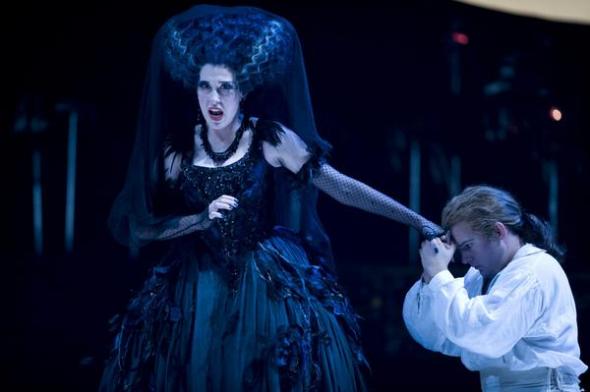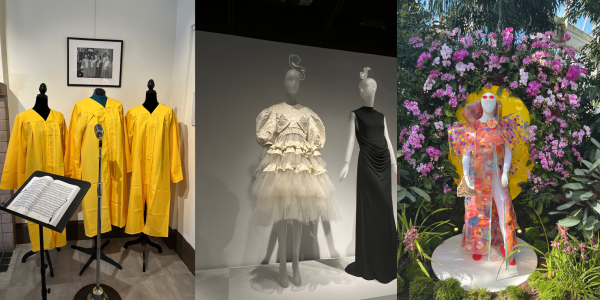The Maestro’s Corner: Queen of the Night (Opera’s Most Notorious Heroine)

Richard Smith (chicagoontheaisle.com)
Emily Hindrichs as Queen of the Night
December 17, 2014
Of all the dark and complicated personalities in opera, one of the most exciting is Mozart’s Queen of the Night. The Queen appears as the central “baddie” in what might be Mozart’s most famous opera, Die Zauberflöte, or The Magic Flute. In the same way that Darth Vader is possibly the most interesting character in Star Wars, the Queen of the Night is the most interesting character in The Magic Flute. Everyone else seems flat and idealized.
In The Magic Flute, almost all the main characters (Prince Tamino, Papageno, Sarastro, the Queen of the Night, and Princess Pamina) have little depth to their personalities—except for the Queen. For instance, Prince Tamino’s complete virtue often comes across as one-dimensional. He never does anything wrong, which makes him a loveable but not very realistic character. Luckily, Papageno, who catches birds for a living and is constantly on the search for a wife, appears far less flat than the other characters. He comes in just behind the Queen as the second-most interesting character; this is due to his mercurial temperament. Sometimes a coward, and sometimes as brave as a lion, Papageno’s antics always entertain. Sarastro, the King of the Day, opposes his spouse the Queen of the Night. Their child Princess Pamina is faithful and sweet, but lacks her mother’s mysterious glamor.
Overall, the Queen of the Night presides as the most difficult to define. Most importantly, she is arrogant and quick to anger. She resents Sarastro’s fame and authority, and cannot bear to see her daughter held in his power. Sarastro calls her heartless. However, a heartless person is defined as lacking in sentiment, and the Queen certainly displays emotion. When she first speaks to Tamino, one can hear her grief and frustration at the loss of her daughter. Listen to the sadness in this aria, O zittre nicht, mein lieber Sohn (click here!). She untruthfully describes Sarastro as an evil villain only because her rage and frustration have warped her point of view.
Throughout the opera, the Queen’s wrath builds–until, in one of the most infamously difficult soprano arias in the history of opera, she tries to convince Pamina to stab Sarastro, or else be disowned. Listen to the mounting fury in her aria Der Hölle Rache kocht in meinem Herzen (click here!). At the end of the opera, the Queen of the Night has become so desperate to get her daughter back that she agrees to make Pamina marry Monostatos (Sarastro’s wicked former servant) if he will help her get Pamina back—although it seems doubtful she would keep her word. However, she does not act as a villain against Tamino, but as an anti-heroine: the greatest of the obstacles that Tamino must overcome to reach virtue. Despite this, she sometimes helps him; for instance, she gives him a magic flute that protects him from danger.
So, the Queen of the Night is not purely evil as she is sometimes described, nor is she purely good. Unlike many of the other characters, her personality is realistic and multi-faceted. She has both a cold, calculating side and a gentle, caring side. She is a mix of both good and evil, driven more by her emotions and forceful persona than her morality.
“O zittre nicht, mein lieber Sohn” https://www.youtube.com/watch?v=IkA65PLEdac
“Der Hölle Rache kocht in meinem Herzen” https://www.youtube.com/watch?v=OLlux8ICOfI
(Interested? For the entire opera, click here: https://www.youtube.com/watch?v=AP_2d4z8KGw)












